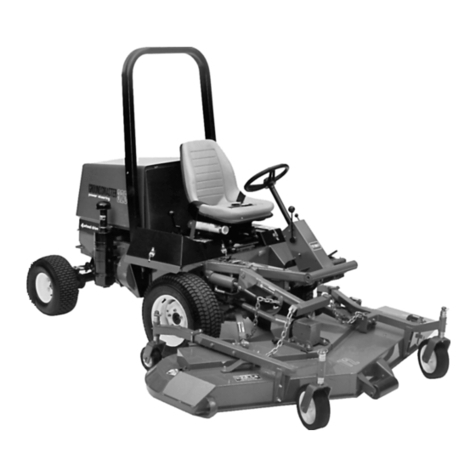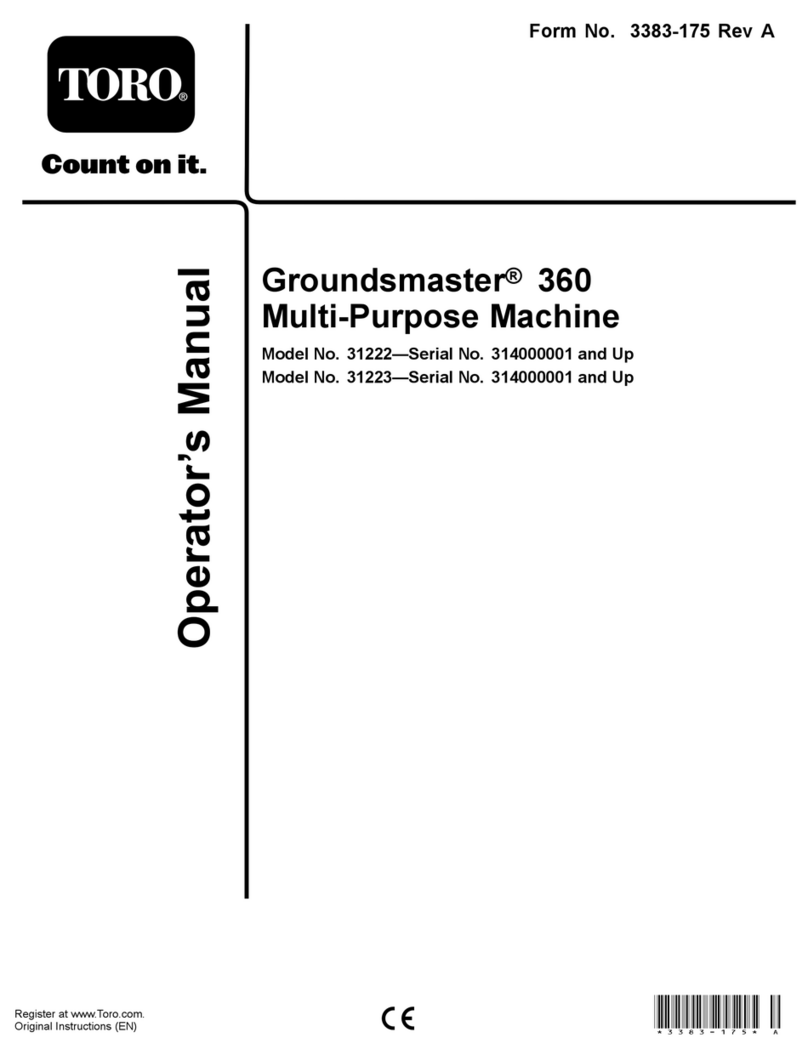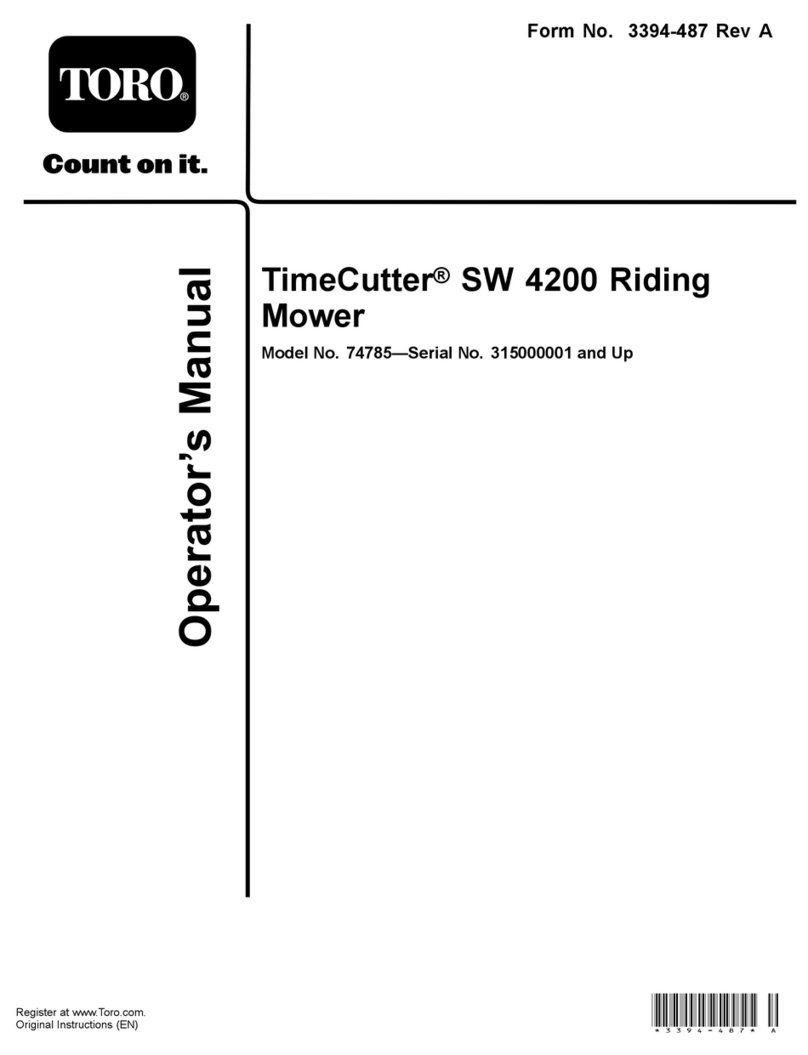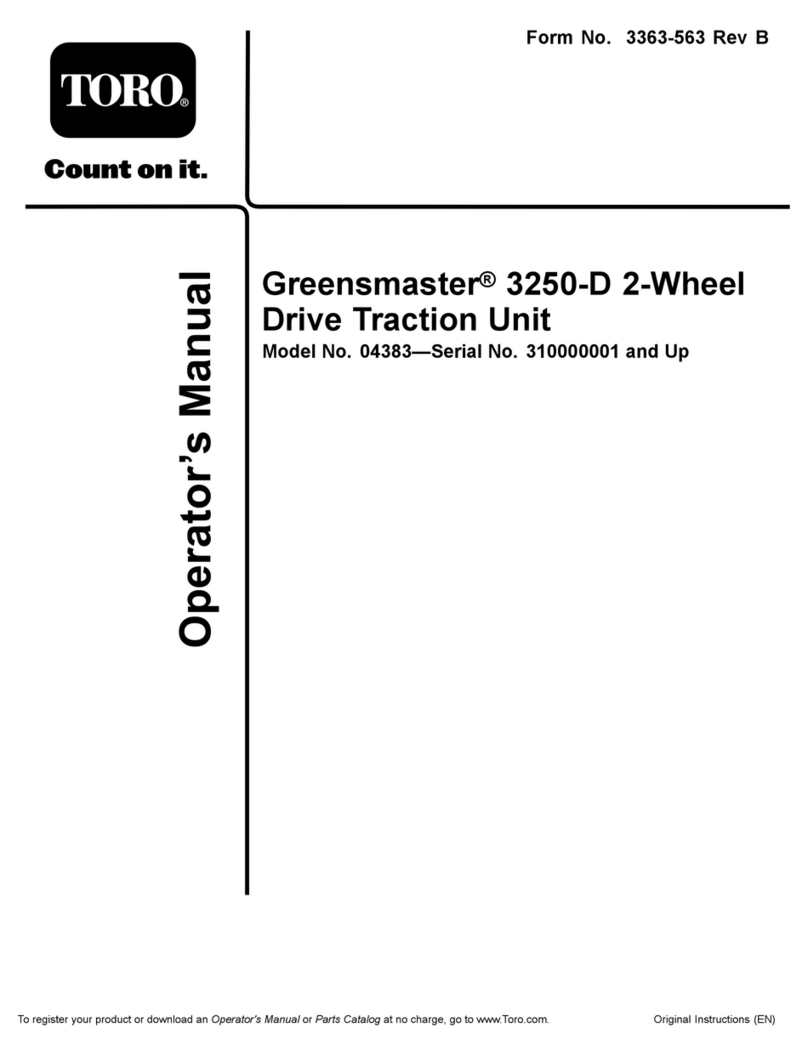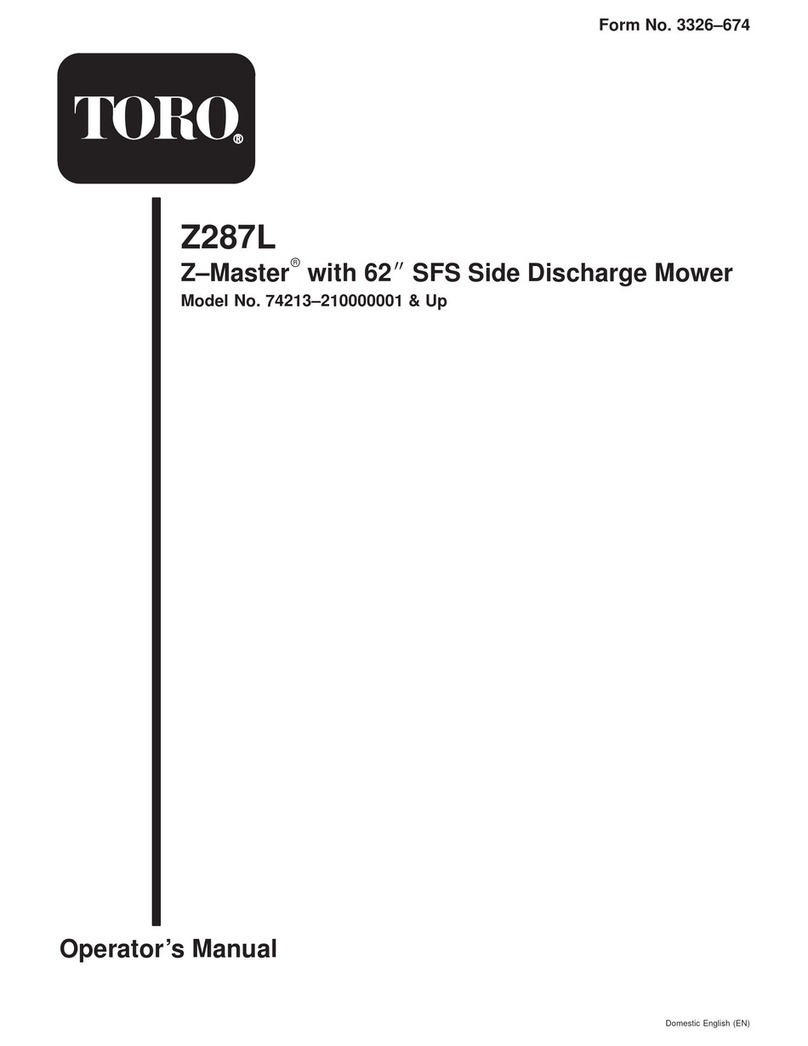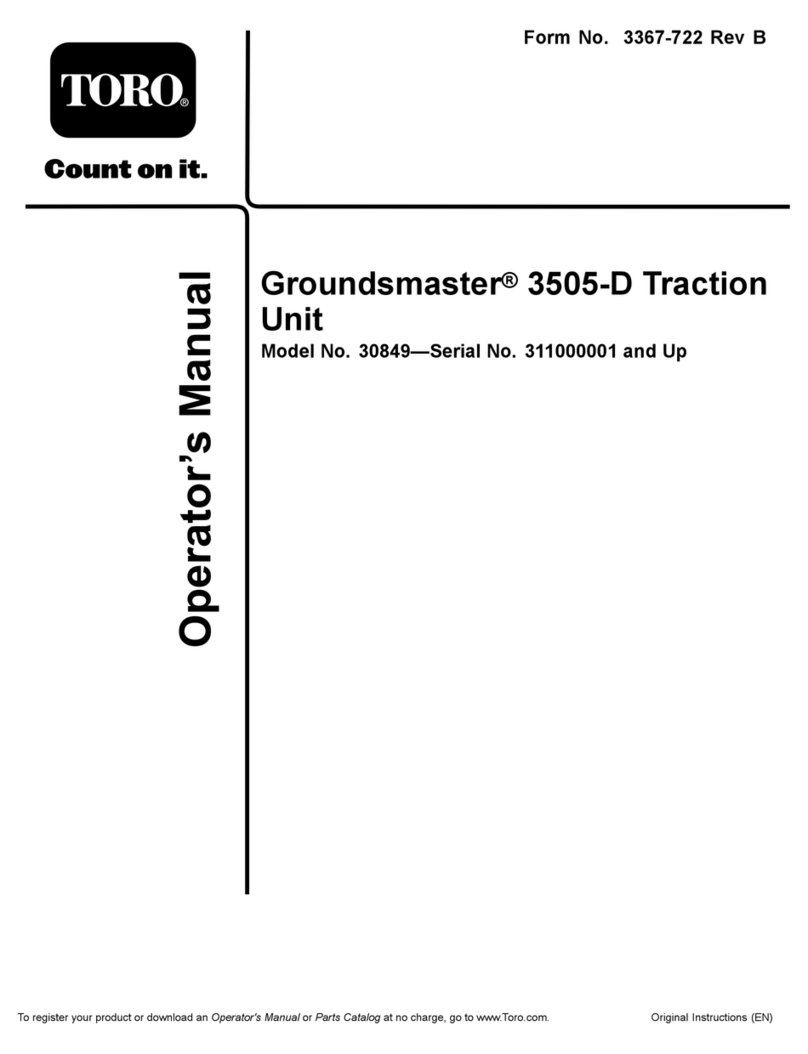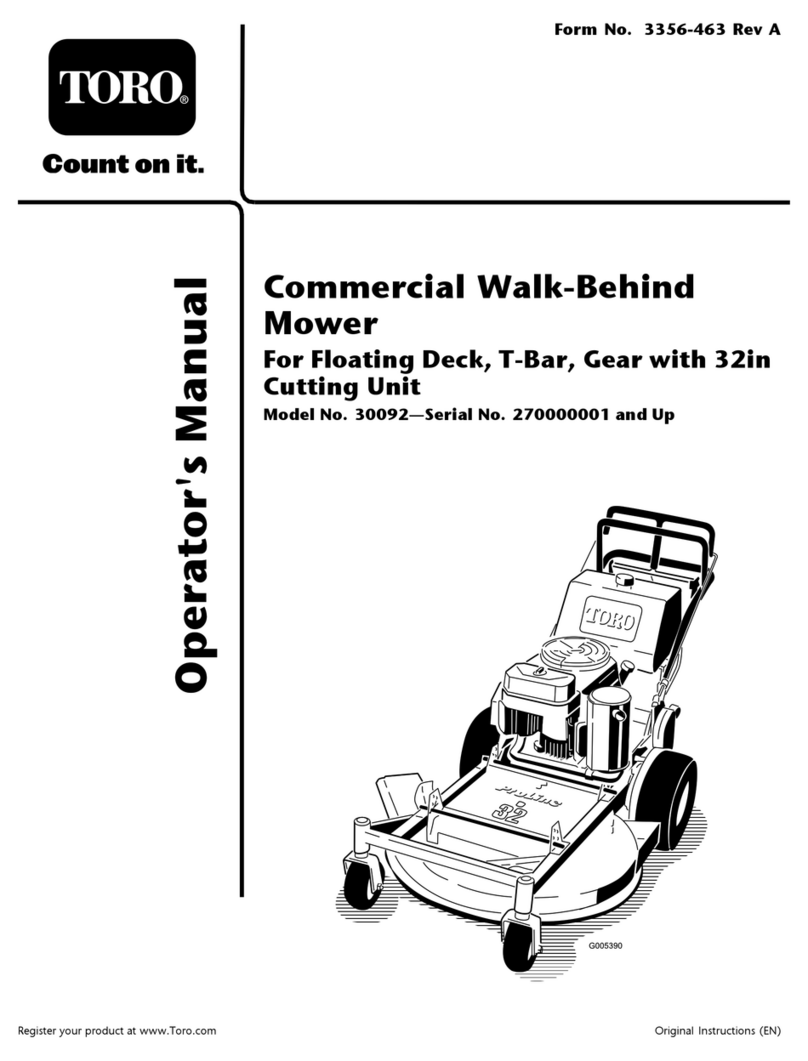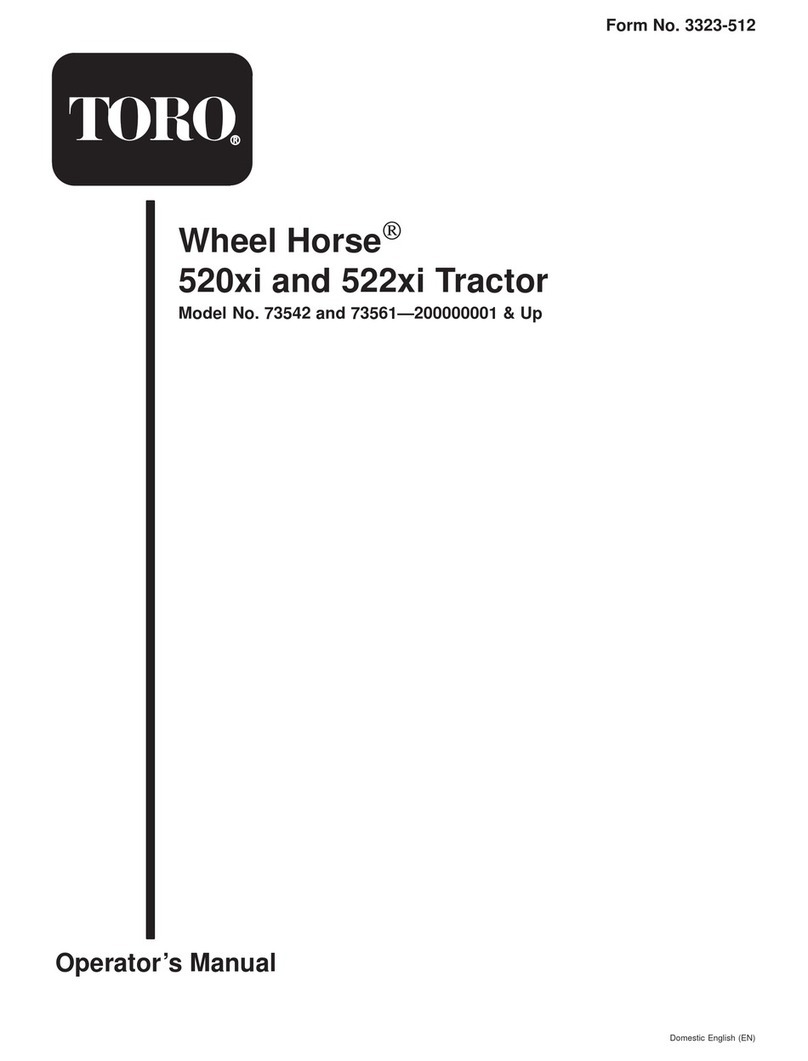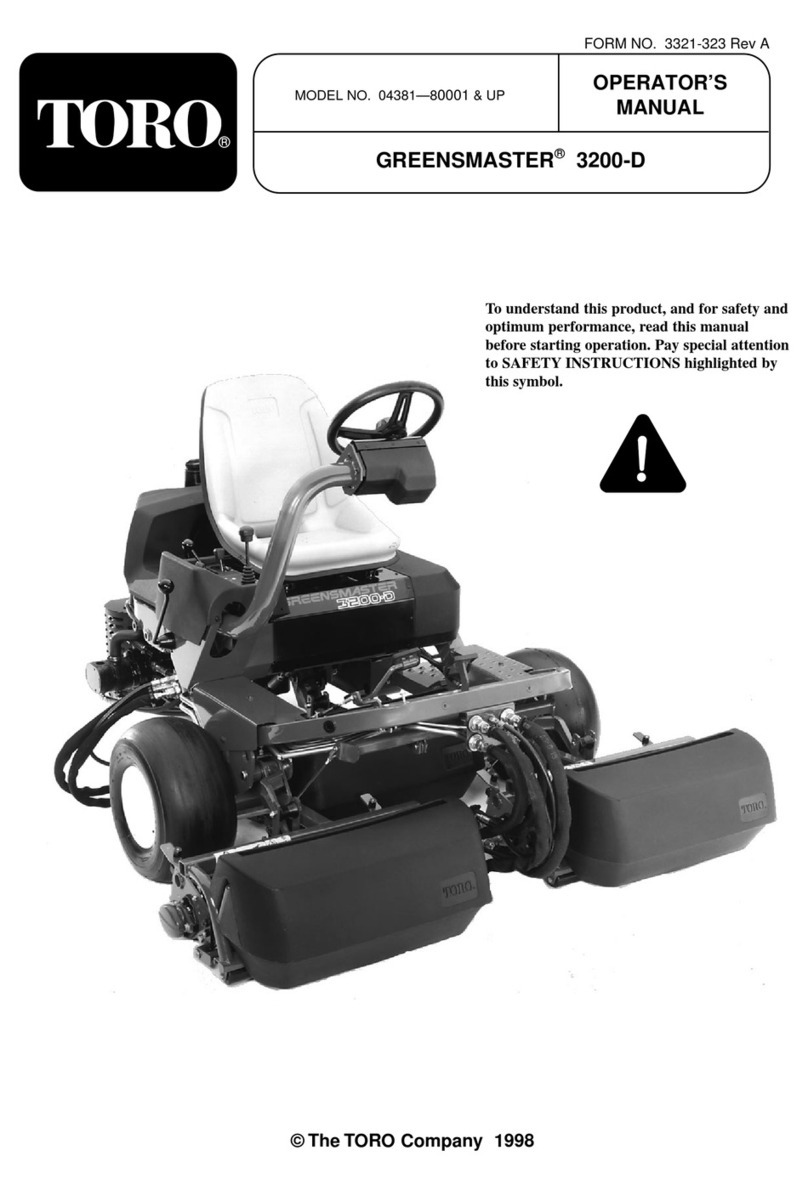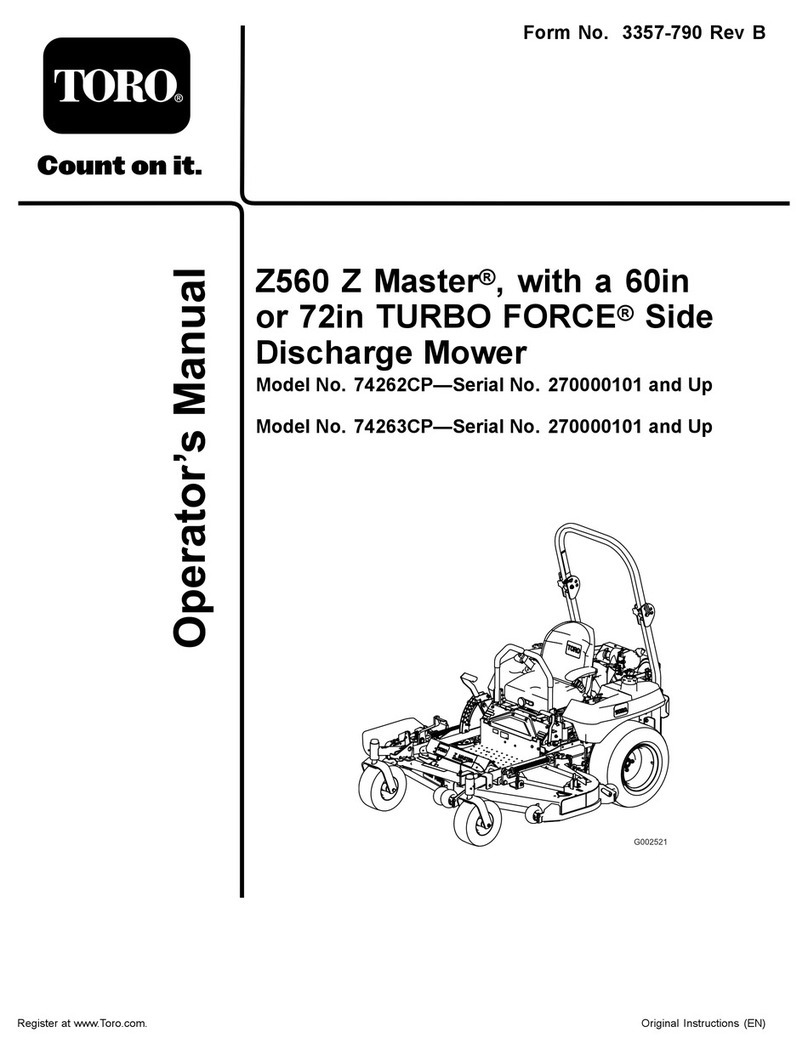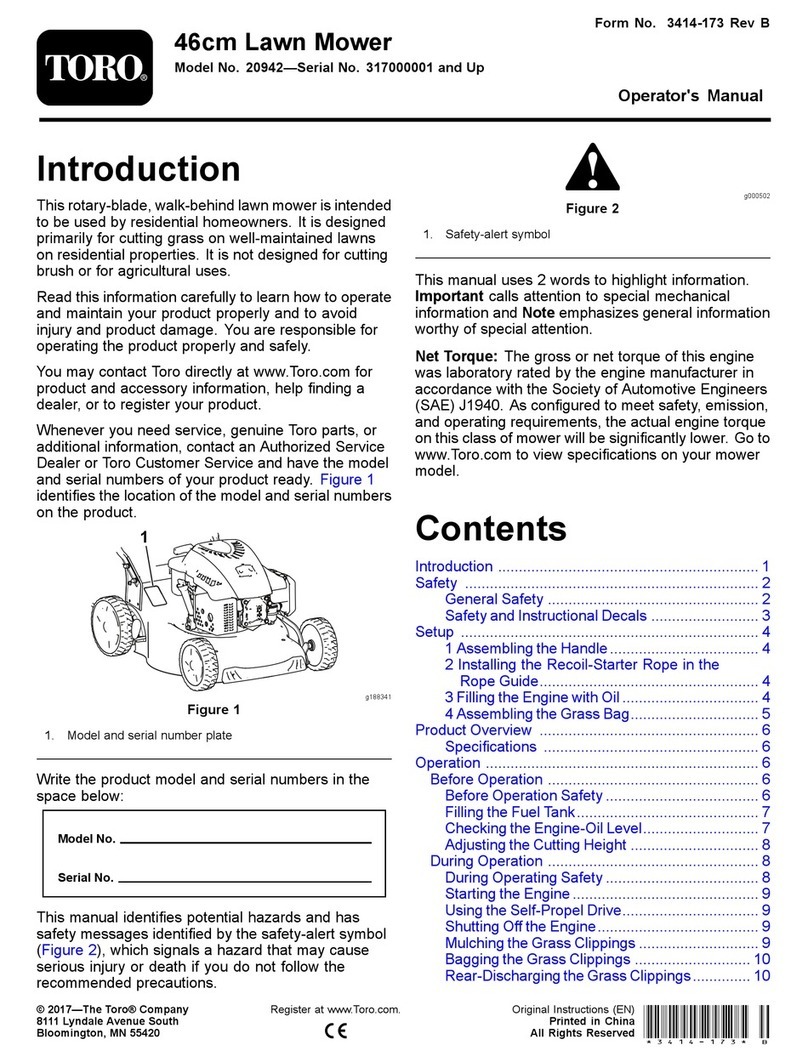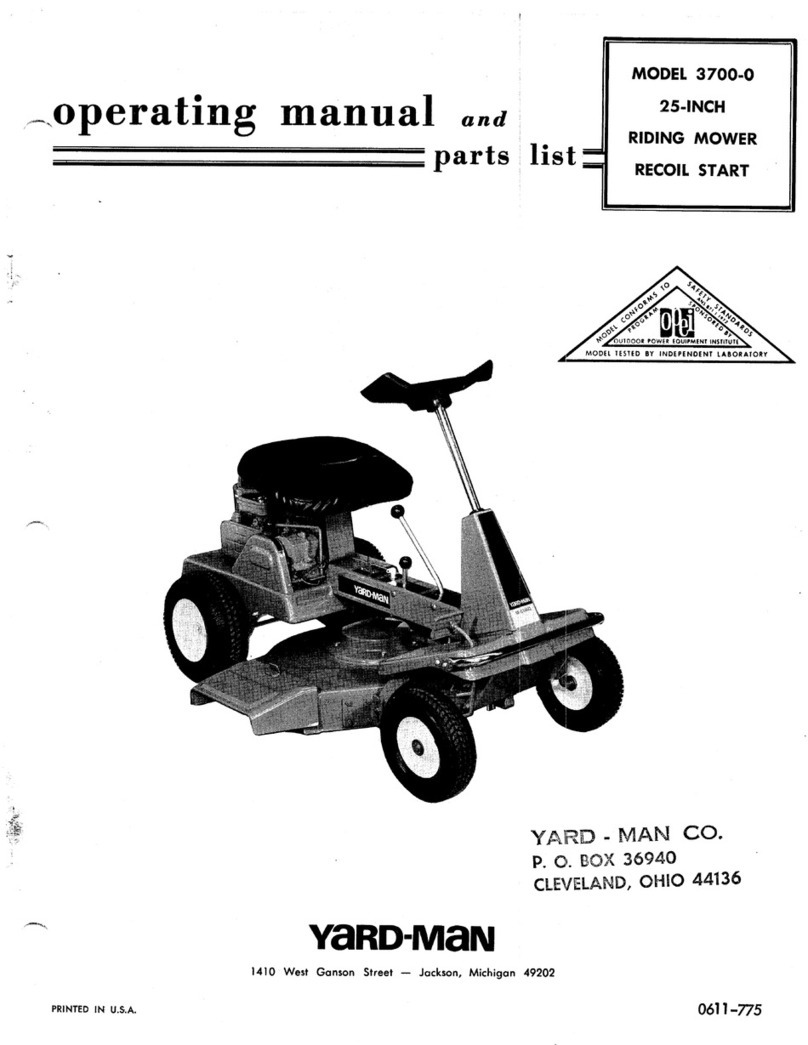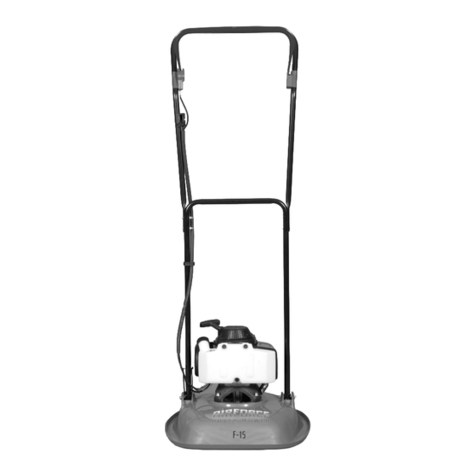
Safety
T his machine meets or ex ceeds CEN standard
EN 836:1997, ISO standard 5395:1990, and
ANSI B71.4-1999 specifications in ef fect at the
time of pr oduction when, ballast is added;
r efer to Adding R ear Ballast in Setup , pa ge 13 .
Note: T he addition of attac hments made b y
other man ufacturers that do not meet American
National Standards Institute cer tification will cause
noncompliance of this mac hine .
Improper use or maintenance b y the operator or
o wner can result in injur y . T o reduce the potential
for injur y , comply with these safety instr uctions
and alw a ys pa y attention to the safety aler t
symbol, whic h means CA UTION , W ARNING , or
D ANGER-“personal safety instr uction. ” F ailure
to comply with the instr uction ma y result in
personal injur y or death.
Safe Operating Practices
T he follo wing instr uctions are from the CEN
standard EN 836:1997, ISO standard 5395:1990,
and ANSI B71.4-1999.
Training
•R ead the Operator’ s Man ual and other training
material. If the operator(s) or mec hanic(s) can
not read English it is the o wner’ s responsibility
to explain this material to them.
•Become familiar with the safe operation of the
equipment, operator controls , and safety signs .
•All operators and mec hanics should be trained.
T he o wner is responsible for training the users .
•Nev er let c hildren or untrained people operate
or ser vice the equipment. Local regulations
ma y restrict the ag e of the operator .
•T he o wner/user can prev ent and is responsible
for accidents or injuries occur ring to himself
or herself , other people or proper ty .
Preparation
•Ev aluate the ter rain to deter mine what
accessories and attac hments are needed to
properly and safely perfor m the job . Only use
accessories and attac hments appro v ed b y the
man ufacturer .
•W ear appropriate clothing including hard hat,
safety glasses and ear protection. Long hair ,
loose clothing or jew elr y ma y g et tangled in
mo ving par ts .
•Inspect the area where the equipment is to be
used and remo v e all objects suc h as roc ks , to ys
and wire whic h can be thro wn b y the mac hine .
•Use extra care when handling diesel fuel. It is
flammable and v apors are explosi v e .
Use only an appro v ed container .
•Nev er remo v e g as cap or add fuel with engine
r unning . Allo w engine to cool before refueling .
Do not smok e .
•Nev er refuel or drain the mac hine indoors .
•Chec k that operator’ s presence controls ,
safety switc hes and shields are attac hed and
functioning properly . Do not operate unless
they are functioning properly .
Operation
•Nev er r un an engine in an enclosed area.
•Only operate in g ood light, k ee ping a w a y from
holes and hidden hazards .
•Be sure all dri v es are in neutral and parking
brak e is eng ag ed before star ting engine . Only
star t engine from the operator’ s position. Use
seat belts if pro vided.
•Slo w do wn and use extra care on hillsides . Be
sure to tra v el in the recommended direction
on hillsides . T urf conditions can affect the
mac hine’ s stability . Use caution while operating
near drop-offs .
•Slo w do wn and use caution when making tur ns
and when c hanging directions on slopes .
•Nev er operate with guards not securely in
place . Be sure all interloc ks are attac hed,
adjusted properly , and functioning proper ty .
•Do not c hang e the engine g o v er nor setting or
o v erspeed the engine .
•Stop on lev el g round, raise the cutting units ,
diseng ag e dri v es , eng ag e parking brak e (if
pro vided), shut off engine before lea ving the
operator’ s position for any reason including
emptying the g rass bask ets .
•Stop equipment and inspect the mac hine after
striking objects or if an abnor mal vibration
4
